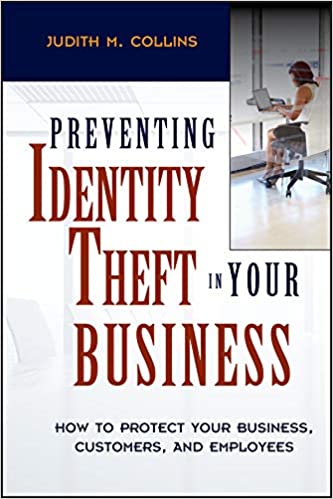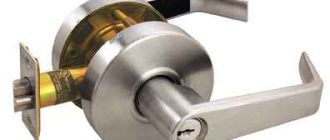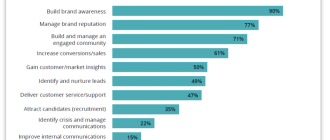
How To Protect Your Business From Theft
In today’s world, ensuring the security of your business is more important than ever. The threat of theft looms large, but with the right prevention strategies in place, you can protect your assets and ensure the safety of your valuables.
One of the key components of a comprehensive theft prevention plan is surveillance. Installing high-quality security cameras in strategic locations allows you to monitor your premises around the clock. This provides a visual deterrent to potential thieves and helps capture evidence in the event of a theft.
Another essential aspect of theft prevention is ensuring your physical assets are secure. High-quality locks play a crucial role in keeping your doors and windows protected. By investing in durable locks and reinforcing weak points, you make it much more difficult for thieves to gain unauthorized access.
While physical security measures are important, it’s also vital to have proper insurance coverage. In the unfortunate event of a theft, having the right insurance policy can help you recover quickly and minimize financial losses. Make sure you understand your policy’s coverage and consider additional coverage options if necessary.
Remember, taking a proactive approach to theft prevention is crucial for the success of your business. By implementing these strategies and staying vigilant, you can greatly reduce the risk of theft and protect your business from potential harm.
“An ounce of prevention is worth a pound of cure.” – Benjamin Franklin
Understanding the Threat of Theft
Theft is a significant concern for any business, regardless of its size or industry. It can lead to financial losses, damage to reputation, and disruption of operations. Understanding the threat of theft is the first step in developing effective prevention strategies to protect your business.
There are various forms of theft that businesses must be aware of. Physical theft involves the unauthorized taking of property, including merchandise, equipment, or cash. Intellectual property theft is another common type, where valuable ideas, patents, or trade secrets are stolen.
Implementing security measures is crucial in deterring theft. Alarms, surveillance cameras, and access control systems can help detect and prevent theft incidents. These tools create a visible deterrent and provide valuable evidence in case of any criminal activity.
Prevention strategies should also involve employee awareness and training. Educating your staff about theft risks and the importance of security can help create a culture of vigilance. Encouraging them to report any suspicious activity and enforcing strict security procedures can significantly reduce the likelihood of theft.
Additionally, having adequate insurance coverage is essential to protect your business from theft-related losses. Theft insurance can provide financial compensation for stolen assets, damaged property, and any resulting business interruption, helping you recover and resume operations swiftly.
Remember, theft prevention is an ongoing process. Regularly assess your security measures, update them as needed, and stay informed about the latest theft prevention technologies and best practices. By implementing a robust theft prevention strategy, you can safeguard your business and minimize the risk of theft.
The Importance of Theft Prevention
Theft is a serious concern for businesses of all sizes. The consequences of theft can be devastating and can result in significant financial loss, damage to reputation, and even the closure of a business. Therefore, it is crucial for businesses to prioritize theft prevention strategies to safeguard their assets and operations.
One of the most effective ways to protect your business from theft is through surveillance. Installing high-quality security cameras can deter potential thieves and provide valuable evidence in case of an incident. Additionally, surveillance systems can help monitor employee activities and identify any suspicious behavior.
Another essential aspect of theft prevention is to protect your premises physically. This can be done by investing in strong locks for doors and windows and implementing access control systems. These measures can significantly reduce the likelihood of unauthorized entry and make it more challenging for thieves to break into your business.
Insurance coverage is also vital for businesses to mitigate the financial impact of theft. Having comprehensive theft insurance can provide the necessary financial support to recover from a loss and minimize the disruption to your operations.
In addition to physical security measures, employing security alarms can be a highly effective theft prevention strategy. Alarms can alert you and the authorities immediately in case of a break-in, allowing for a quick response and a higher likelihood of apprehending the thief.
Overall, the importance of theft prevention cannot be overstated for businesses. By implementing a combination of surveillance, physical security measures, insurance coverage, and alarms, you can significantly reduce the risk of theft and protect your valuable assets. Take proactive steps to safeguard your business from potential thieves, ensuring the security and peace of mind for yourself and your customers.
Identifying Vulnerabilities in Your Business
Protecting your business from theft requires a thorough understanding of its vulnerabilities. By identifying any weak points, you can implement effective prevention strategies to ensure the security of your valuable assets.
One common vulnerability is a lack of proper security measures. Without adequate protection, your business becomes an easy target for thieves. Installing alarms, surveillance cameras, and strong locks can significantly deter criminals and prevent unauthorized access.
Another vulnerability to consider is the physical layout of your business premises. Are there blind spots or hidden areas where thieves can easily hide and carry out their activities unnoticed? Conduct a thorough assessment of your property to identify any areas that need additional security measures.
Employee theft is another potential vulnerability. While it’s important to trust your staff, it’s also essential to have proper control measures in place. Implementing strict inventory management procedures, conducting background checks, and providing regular training on theft prevention can help reduce the risk of internal theft.
Insurance can also play a vital role in protecting your business. Ensure you have adequate coverage that includes theft protection. In the unfortunate event of a theft, having the right insurance can help you recover financially and minimize the impact on your business.
Regularly reassessing your vulnerabilities is crucial, as new threats and risks may arise over time. Stay vigilant and adapt your security measures accordingly to maintain a high level of protection for your business.
Remember, by proactively identifying and addressing vulnerabilities, you can ensure that your business is well-protected against theft and maintain peace of mind.
Creating a Comprehensive Security Plan
When it comes to protecting your business from theft, having a comprehensive security plan is crucial. By implementing a well-designed security plan, you can greatly reduce the risk of theft and ensure the safety of your business, employees, and customers.
The first step in creating a comprehensive security plan is to assess the potential vulnerabilities of your business. Identify areas where theft is most likely to occur, such as cash registers, storage rooms, and inventory areas. Consider installing alarms, security cameras, and surveillance systems in these high-risk areas to deter theft and provide evidence in case of any incidents.
Next, implement proper access control measures to prevent unauthorized individuals from entering sensitive areas of your business. This can be done by using locks, access cards, or biometric systems to limit access to certain areas, such as offices, computer rooms, and stockrooms. By restricting access to only authorized personnel, you can significantly reduce the risk of theft.
Another important aspect of a comprehensive security plan is employee training. Educate your employees about the importance of theft prevention and provide them with the necessary knowledge and skills to identify and report any suspicious activities. Encourage them to be vigilant and observant, and establish clear procedures for reporting any security concerns.
In addition to physical security measures, consider implementing strict inventory control procedures. Conduct regular audits and inventory checks to detect any discrepancies and identify potential areas of concern. By maintaining accurate records and keeping track of your inventory, you can minimize the risk of internal theft.
Lastly, regularly review and update your security plan to adapt to changing threats and technologies. Stay informed about the latest security advancements and seek professional advice if needed. By staying proactive and continuously improving your security measures, you can stay one step ahead of potential thieves and protect your business effectively.
In conclusion, creating a comprehensive security plan is essential for protecting your business from theft. By implementing a combination of physical security measures, employee training, and inventory control procedures, you can greatly reduce the risk of theft and ensure the safety and security of your business.
Securing Your Physical Assets
In order to effectively protect your business from theft, it is crucial to implement proper security measures to safeguard your physical assets. By taking the necessary precautions, you can significantly reduce the risk of theft and ensure the safety of your valuable business assets.
- Install a sophisticated security system: Investing in a comprehensive security system is vital for your business. Make sure to install surveillance cameras strategically and include features such as motion detectors, alarms, and access control systems. This will discourage thieves and provide evidence in case of a break-in.
- Secure entrances and exits: Ensure that all entry points to your business are properly protected. Install sturdy doors with multiple locks or consider using keyless entry systems. Regularly inspect and maintain these entry points to identify and address any vulnerabilities.
- Implement proper lighting: Adequate outdoor and indoor lighting is essential to deter theft. Well-lit areas make it difficult for thieves to go unnoticed and can help employees and security personnel identify potential threats.
- Safeguard your valuable assets: Store your high-value items, such as cash, inventory, and sensitive information, in secure areas. Consider using safes, lockable cabinets, and restricted access to protect these assets from unauthorized access.
- Train employees: Educate your employees about the importance of security and theft prevention. Provide training on how to recognize suspicious activity, properly handle keys or access codes, and report any security concerns to management.
- Secure the perimeter: Implement physical barriers, such as fences, gates, or bollards, to prevent unauthorized access to your business premises. Conduct regular inspections to identify any potential weak points and address them promptly.
- Consider insurance coverage: Explore insurance options that specifically cover theft and property damage. Having adequate insurance can provide financial protection in case of an unfortunate event and help you recover quickly.
By following these theft prevention strategies and securing your physical assets, you can proactively protect your business and minimize the risk of theft. Remember that prevention is always better than dealing with the aftermath of a theft, so prioritize security and make it a top priority for your business.
Implementing Access Control Measures
When it comes to protecting your business from theft, implementing access control measures is crucial. These security measures help ensure that only authorized individuals can access certain areas of your business.
Access control measures include using locks, security passes, and surveillance systems to prevent unauthorized entry into restricted areas. By implementing these measures, you can significantly reduce the risk of theft and unauthorized access to sensitive information.
One effective access control measure is installing security cameras throughout your business premises. These surveillance systems not only deter potential thieves but also provide evidence in the event of a theft. By having a record of all activities, it becomes easier to identify and apprehend perpetrators.
In addition to surveillance systems, you can also use electronic locks and access cards to further restrict access to specific areas. This allows you to grant access to only authorized personnel, ensuring that valuable assets and sensitive information are protected.
Another important access control measure is implementing a strict visitor policy. By requiring all visitors to sign in and wear identification badges, you can easily identify anyone who is not authorized to be on your premises. This helps prevent unauthorized individuals from gaining access to restricted areas.
It’s important to regularly review and update your access control measures to stay ahead of potential threats. By working closely with your security team, you can identify any vulnerabilities in your current system and implement necessary improvements.
Remember, investing in access control measures is an essential part of theft prevention strategies for any business. By proactively protecting your business and assets, you not only reduce the risk of theft but also demonstrate to your employees and customers that their safety and security are a top priority.
Don’t underestimate the importance of access control measures in your overall security plan. With the right combination of surveillance, locks, and access policies, you can protect your business from potential theft and ensure peace of mind.
Using Video Surveillance Systems
Video surveillance systems are an essential tool in protecting your business from theft and providing a robust security solution. These systems offer a proactive approach to theft prevention, helping to deter criminals, monitor suspicious activity, and provide crucial evidence in case of an incident.
By installing video surveillance cameras strategically throughout your business premises, you can effectively deter potential thieves. The presence of visible cameras acts as a deterrent, as criminals are less likely to target a business with a strong surveillance system. Additionally, the ability to monitor suspicious activity in real-time allows for immediate action to be taken, preventing theft before it happens.
In the unfortunate event of a theft, a video surveillance system provides essential evidence that can assist law enforcement in identifying and apprehending the criminals. The recorded footage from the cameras can be used as solid evidence in court, improving the chances of a successful prosecution. Additionally, video surveillance systems can also aid in the recovery of stolen items by providing valuable leads and clues to law enforcement.
Video surveillance systems can also have a positive impact on your insurance premiums. By demonstrating to insurance companies that you have taken proactive measures to protect your business from theft, you may be eligible for lower insurance rates. Insurance companies often offer discounts to businesses with comprehensive security systems in place, including video surveillance.
When implementing a video surveillance system for your business, it is important to consider the placement of cameras to ensure maximum coverage and effectiveness. High-risk areas such as entrances, cash registers, and storage areas should be well-monitored to minimize the risk of theft. Additionally, it is important to regularly maintain and update your surveillance system to ensure its reliability and performance.
| Benefits of Video Surveillance Systems: |
| – Deters theft and criminal activity |
| – Provides real-time monitoring |
| – Provides valuable evidence for prosecution |
| – Aids in the recovery of stolen items |
| – Can lower insurance premiums |
Investing in a video surveillance system is a proactive and essential step in protecting your business from theft. With its ability to deter criminal activity, provide crucial evidence, and potentially lower insurance premiums, video surveillance is an effective tool in theft prevention.
Utilizing Alarm Systems
When it comes to theft prevention strategies for your business, utilizing alarm systems is a crucial step in protecting your assets. Alarm systems act as a deterrent to potential thieves and provide an additional layer of security to your business premises.
Locks alone may not always be sufficient in preventing theft, but alarm systems can greatly enhance the security of your business. By installing alarms, you can minimize the risk of theft and ensure that your valuable assets are protected.
There are different types of alarm systems available for businesses, including intruder alarms, fire alarms, and surveillance alarms. Intruder alarms are designed to detect unauthorized entry into your premises and alert you or a security company immediately. Fire alarms, on the other hand, can help detect and prevent fire-related incidents, protecting your business from potential damage.
In addition to alerting you or a security company, alarm systems can also notify the local authorities, ensuring a swift response in case of any security breaches. This quick response can help catch and deter thieves, increasing the chances of recovering stolen assets and minimizing losses.
Furthermore, having alarm systems installed can also have a positive impact on your insurance premiums. Insurers often offer discounts to businesses that have adequate security measures in place, including alarm systems. By investing in these systems, you not only protect your business but also save money in the long run.
Surveillance alarms, combining the functions of both alarm systems and surveillance cameras, provide an added layer of security. They not only detect and react to potential theft attempts but also allow you to monitor your premises remotely. This can be particularly valuable for businesses with multiple locations or those that operate outside regular business hours.
Overall, utilizing alarm systems is an essential part of any comprehensive theft prevention strategy for your business. By investing in these systems, you can protect your assets, deter thieves, and potentially save money on insurance premiums. Take the necessary steps to secure your business today and ensure peace of mind for yourself and your employees.
Training Employees on Theft Prevention
When it comes to protecting your business from theft, training your employees on theft prevention strategies is crucial. By ensuring that your staff is well-informed and knowledgeable about the various measures and techniques to prevent theft, you can significantly reduce the risk of any unauthorized activities taking place in your establishment.
Here are some key training points to consider:
- Recognizing suspicious behavior: Employees should be trained to be vigilant and to recognize any unusual or suspicious behavior exhibited by customers or co-workers. This includes paying attention to individuals who exhibit nervousness, constant surveillance of their surroundings, or unusual interest in high-value products.
- Proper use of locks and alarms: It is essential to educate your staff on the correct use of locks and alarms in securing the premises. They should be aware of how to properly lock doors and windows, activate alarms, and report any malfunctions or potential vulnerabilities.
- Understanding theft prevention devices: Equip your employees with knowledge about the various theft prevention devices used in your business, such as security cameras, electronic tags, and sensors. They should know how these devices work and how to utilize them effectively.
- Reporting incidents promptly: Establish a clear protocol for reporting incidents of theft or suspicious activities. Encourage your employees to report any incidents promptly and provide them with a secure and confidential method to do so. This will help maintain a safe and secure work environment.
- Working with law enforcement: Train your employees on the importance of cooperating with law enforcement agencies in the event of a theft. Provide them with guidelines on how to interact with authorities and the necessary information they should provide to aid in investigations.
- Insurance coverage: Inform your staff about the importance of having proper insurance coverage to protect the business against theft. They should be aware of the insurance policies in place and understand the procedures for filing claims in case of theft or loss.
- Surveillance and monitoring: Educate your employees on the significance of surveillance and monitoring systems in deterring theft. Train them on how to use surveillance equipment properly and emphasize the importance of maintaining confidentiality and integrity when handling surveillance footage.
By training your employees on theft prevention, you are not only safeguarding your business but also empowering your staff to take an active role in protecting the company’s assets. Remember, prevention is key, and a well-informed workforce can make a significant difference in reducing the risk of theft.
Establishing Inventory Control Procedures
When it comes to protecting your business from theft, establishing inventory control procedures plays a crucial role. Having proper control over your inventory not only helps prevent theft but also ensures smooth business operations.
One of the first steps in establishing inventory control procedures is to implement a comprehensive system of locks and access controls. By restricting access to your inventory storage areas, you can minimize the risk of unauthorized individuals gaining entry.
In addition to locks, investing in a good business insurance policy can provide an additional layer of protection. This way, in the unfortunate event of theft, your business can recuperate the financial losses and resume operations more quickly.
Alarms are another essential component of an effective inventory control procedure. By installing alarms, you can deter potential thieves and notify authorities promptly in case of a break-in.
However, prevention is always better than dealing with the aftermath of theft. Implementing security measures such as surveillance cameras can help deter theft and provide valuable evidence in case of an incident.
Finally, regular auditing and monitoring of your inventory are essential in maintaining effective inventory control procedures. By consistently tracking your inventory and conducting regular audits, you can quickly identify any discrepancies or potential thefts and take appropriate action.
In conclusion, establishing inventory control procedures is vital for protecting your business from theft. By implementing measures such as locks, business insurance, alarms, and surveillance, you can create a secure environment and minimize the risk of theft. Remember, prevention is key, and regular monitoring of your inventory is essential to ensure the effectiveness of your control procedures.
Protecting Sensitive Information
When it comes to protecting your business from theft, it’s not just physical assets that you need to worry about. Sensitive information, such as customer data, financial records, and trade secrets, can also be valuable targets for thieves. To safeguard this information, consider the following strategies:
1. Secure Data Storage: Keep sensitive information stored in encrypted databases or password-protected systems. Regularly update passwords and access controls to prevent unauthorized access.
2. Employee Training: Educate your employees about the importance of safeguarding sensitive information. Teach them about common phishing attacks, social engineering techniques, and password hygiene. By raising awareness, you can minimize the risk of accidental data breaches.
3. Document Protection: Lock up important documents in secure cabinets or safes. Limit access to these documents to only authorized personnel. When disposing of sensitive documents, use shredders to thoroughly destroy them.
4. Network Security Measures: Install firewalls, antivirus software, and intrusion detection systems to protect your business network from cyber threats. Regularly update these security measures to stay ahead of evolving risks.
5. Data Backup and Recovery: Regularly backup sensitive information and store it securely off-site. In the event of a data breach or system failure, having a comprehensive backup plan can help you quickly recover and minimize potential losses.
6. Privacy Policies: Clearly define your business’s privacy policies and make sure they comply with relevant regulations. Inform customers about how their data is collected, used, and stored. Being transparent about your data management practices can help build trust with your customers.
7. Third-party Vendors: If you work with third-party vendors who handle sensitive information, ensure that they have appropriate security measures in place. Conduct due diligence and regularly monitor their compliance to minimize potential risks.
By implementing these strategies to protect sensitive information, you can enhance your overall security posture and safeguard your business from theft and data breaches.
Q&A:
What is the main purpose of this book?
The main purpose of this book is to provide a comprehensive guide for business owners on how to prevent theft and protect their businesses.
What are some common theft prevention strategies mentioned in this book?
This book provides a wide range of theft prevention strategies, including implementing security systems, conducting background checks on employees, creating a positive work environment, and establishing inventory control measures.
Does this book offer tips for small businesses specifically?
Yes, this book offers tips and strategies tailored specifically for small businesses, as they often have different needs and resources compared to larger corporations.
How can this book benefit business owners?
This book can benefit business owners by providing them with practical and effective strategies to prevent theft, ultimately protecting their assets, reputation, and profitability.
Is this book suitable for all types of businesses?
Yes, this book is suitable for business owners from various industries, including retail, hospitality, manufacturing, and service-based businesses.






